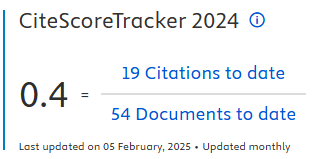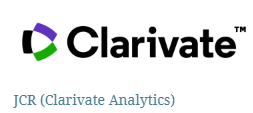Patent bases as a source of technological information in the Engineering area I: evidence from brazilian specialists
DOI:
https://doi.org/10.5585/2024.24420Keywords:
patents, survey, stricto sensu postgraduate studies, technological information, Engineering IAbstract
Objective: to identify researchers' perception of knowledge about using technological information in patent databases as a source for developing academic research (scientific and technological).
Method: This study surveyed 43 stricto sensu postgraduate programs in Brazil in the Engineering I area, Sanitary Engineering subarea of CAPES.
Originality/Relevance: Much of the technological information available in the world appears only in patent documents, and the originality of this study consists of identifying the use of such information by researchers. Thus, showing the application of this knowledge in academic research can take them to another level of knowledge.
Results: We identified that only 33% of researchers use patent bases as a source of technological information; more than 65% of searches focus on verifying the possibility of patenting. We found that such information is not applied in academic research, with ample space for disseminating and applying such knowledge.
Social/Management Contributions: Expanding the use of technological information will enable academic production to use the most recent technology, products, or processes in the world. From a managerial point of view and the identification of the low use of patent bases, it was observed that there is a need to develop a method or tool that will make the use of patents more user-friendly as a source of technological information.
Downloads
References
Amparo, KKS et al. (2012). Case study using technological prospecting mapping as the main scientific search tool. Perspectives on Information Science, 17(4), 195-209. http://dx.doi.org/10.1590/S1413-99362012000400012
Antunes, AMS et al. (2018). Technological prospecting methods, competitive intelligence and foresight: main concepts and techniques. In: Ribeiro, NM (Org.). Technological Foresight, 19-108. http://www.profnit.org.br/pt/livros-profnit/
Asche, G. (2017). "80% of technical information found only in patents" and Is there proof of this? World Patent Information, 48, 16-28. https://doi.org/10.1016/j.wpi.2016.11.004
Avanci, VL and Ruiz, AU (2021). Technology cycles and the evolution of the knowledge base complexity since the 1980s. Brazilian Innovation Magazine, 20, 1-24. https://doi.org/10.20396/rbi.v20i00.8655490
Babbie, E. (1999). Survey Research Methods, UFMG, 519p.
Barbosa, DB (2003) An introduction to intellectual property. Lumen Juris, 951p.
Bardin, L. (2009). Content analysis. Editions 70, 118p.
Braga, TEN and Simeão, ELMS (2018). Technological information in Brazil: evolution of scientific production on the topic. Information & Society, 28(3), 287-304. https://periodicos.ufpb.br/ojs2/index.php/ies/article/view/41856
Brazil. National Institute of Industrial Property (INPI) (2020). Activity Report for 2019. https://www.gov.br/inpi/pt-br/central-de-conteudo/estatisticas/arquivos/relatorios/relatoriodeatividadesinpi_2019.pdf
Brazil. National Institute of Industrial Property (INPI). Executive Board. Economic Affairs Advisory. (2021). Industrial Property Indicators 2020. INPI, 50p. https://www.gov.br/inpi/pt-br/acesso-a-informacao/boletim-mensal/arquivos/documentos/indicadores-2020_aecon_vf-27-01-2021.pdf
Brazil. National Institute of Industrial Property (INPI). (2023). Institutional website. Available at www.inpi.gov.br.
Brazil. Law no. 9,279/96. Regulates rights and obligations relating to industrial property. Available at: https://www.planalto.gov.br/ccivil_03/leis/l9279.htm
Brazil. Coordination for the Improvement of Higher Education Personnel (CAPES). (2023). Recommended/recognized courses – by assessment area – Engineering I / Sanitary Engineering. https://sucupira.CAPES.gov.br/sucupira/public/consultas/coleta/programa/quantitativos/quantitativoIes.jsf?
areaAvaliacao=10&areaconhecimento=30700000
Caviggioli, F. (2016) Technology fusion: Identification and analysis of the drivers of technology convergence using patent data. Technovation, 55-56, 22-32. https://doi.org/10.1016/j.technovation.2016.04.003
Center for Management and Strategic Studies – CGEE. (2021). Panorama of Brazilian science: 2015-2020. OCTI Annual Bulletin Year 1. CCGE, 200p. https://www.cgee.org.br/documents/10195/11009696/CGEE_Pan_Cie_Bra_2015-20.pdf
Cunha, KCT et al. (2023). Patent documents as a source of information for scientific and technological studies in the area of applied social sciences. International Journal of Innovation, 11(1), 1-36, e22122. https://doi.org/10.5585/2023.22122
European Patent Office. (2007). Why researchers should care about patents. EPO, 8p. https://ec.europa.eu/invest-in-research/pdf/download_en/patents_for_researchers. pdf
Ferraz, MCC (2008). Reflections on the use of patent documents in undergraduate courses. Brazilian Innovation Magazine, 7(2), 287-312. https://doi.org/10.20396/rbi.v7i2.8648966
Ferreira, AA et al. (2009). Patent as a competitive instrument and as a source of technological information. Management & Production, 16(2), 209-221. https://doi.org/10.1590/S0104-530X2009000200005
Ferreira, NSA (2002). Research called "state of the art". Education & Society, 79. https://doi.org/10.1590/S0101-73302002000300013
Gil, A.C. (2008). Social research methods and techniques. Atlas, 23p.
Gomes, RC et al. (2019). Methodological proposal for the use of patents in research of interorganizational collaboration networks for innovation. Journal of Environmental Management & Sustainability, 8(3). https://doi.org/10.5585/geas.v8i3.15777
Haase, H. et al. (2005). Innovations seen through patents: requirements regarding the new functions of universities. Brazilian Innovation Magazine, 4(2). https://doi.org/10.20396/rbi.v4i2.8648916
Hirata, D. et al. (2015). The use of patent information for the recovery of industrial waste: the case of domestic sewage treatment sludge. Journal of Administration Sciences, 17(43), 55-71. http://dx.doi.org/10.5007/2175-8077.2015v17n43p55
Jannuzzi, AHL and Souza, CG (2008). Invention patents and scientific articles: specificities and similarities. Brazilian Postgraduate
Journal, 5(9). https://doi.org/10.21713/2358-2332.2008.v5.144
Kyebambe, MN et al. (2017). Forecasting emerging technologies: A supervised learning approach through patent analysis. Technological Forecasting and Social Change, 125, 236-244. https://doi.org/10.1016/j.techfore.2017.08.002
Kim, J., and Jun, S. (2015). Graphical causal inference and copula regression model for apple keywords by text mining. Advanced Engineering Informatics, 29, 918-929. https://doi.org/10.1016/j.aei.2015.10.001
Linares, IMP et al. (2019). Patent-based network analysis to understand technological innovation pathways and trends. Technology in Society, 59, 101-134. https://doi.org/10.1016/j.techsoc.2019.04.010
Menezes, CCN et al. (2016). Mapping environmental technologies: a study on green patents in Brazil. Journal of Environmental Management and Sustainability, 5(1), 110-127. https://doi.org/10.5585/geas.v5i1.369
Mueller, S.P.M., and Perucchi, V. (2014). Universities and the production of patents: topics of interest to the student of technological information. Perspectives on Information Science, 19(2), 15-36. https://doi.org/10.1590/1981-5344/1828
Paranhos, RCS and Ribeiro, NM (2018). Importance of technological prospecting based on patents and its search objectives. Prospection Notebooks, 11( 5), 1274-1292. http://dx.doi.org/10.9771/cp.v12i5.28190
Personon, PGJ et al. (2020). The science base of renewables. Technological Forecasting & Social Chang e, 158, 120-121. https://doi.org/10.1016/j.techfore.2020.120121
Pimenta, FP (2017). The patent as a source of ( un )necessary information for Biotechnology in Health. TransIn Informação, 29(3), 323-332. https://doi.org/10.1590/2318-08892017000300009
Pinto, JC et al. (2017). The use of patents as a methodological instrument for multidisciplinary teaching of technological innovations. In: International Teacher Training Meeting and Permanent Forum for Educational Innovation.
Qi, Z. et al. (2023). Patent mining on soil pollution remediation technology from the perspective of technological trajectory. Environmental Pollution , 316(1), 120661. https://doi.org/10.1016/j.envpol.2022.120661
Scartassini, VB and Moura, AMM (2020). Relationship between the production of articles and patents at the Federal University of Rio Grande do Sul and research financing. Ibero-American Journal of Information Science, 13(3), 915-935.
http://dx.doi.org/10.26512/rici.v13.n3.2020.30936
Song, K. et al. (2017). Discovering new technology opportunities based on patents: text-mining and F-term analysis.
Technovation, 60-61, 1-14. https://doi.org/10.1016/j.technovation.2017.03.001
Suh, Y., and Jeon, J. (2019). Monitoring patterns of open innovation using the patent-based brokerage analysis. Technological Forecasting and Social Change, 146, 595-605. https://doi.org/10.1016/j.techfore.2018.01.037
Teixeira, CHSB et al. (2017). The development of knowledge in research and development and registration through patents in Brazil – a professional experience. Research, Society and Development, 6(4), 370-381. https://doi.org/10.17648/rsd-v6i4.195
Toledo, AGL and Campos, LA (2018). Green patents and the abrasive manufacturing sector in Brazil: discussing the strategic potential of the program in light of shared value. Environmental Management and Sustainability Magazine, 7(1), 146-161.
https://doi.org/10.5585/geas.v7i1.313
van der Waal, JWH et al. (2021). The innovative contribution of multinational enterprises to the sustainable development goals. Journal of Cleaner Production, 285, 125319. https://doi.org/10.1016/j.jclepro.2020.125319
World Intellectual Property Organization – WIPO. (2022). World Intellectual Property Indicators 2022. 185 p. https://doi.org/10.34667/tind.47082
Downloads
Published
How to Cite
Issue
Section
License
Copyright (c) 2024 Isabel Grunevald, Liane Mahlmann Kipper, Jorge Andre Ribas Moraes

This work is licensed under a Creative Commons Attribution-NonCommercial-ShareAlike 4.0 International License.
- Abstract 148
- pdf 123
- pdf (Português (Brasil)) 50










